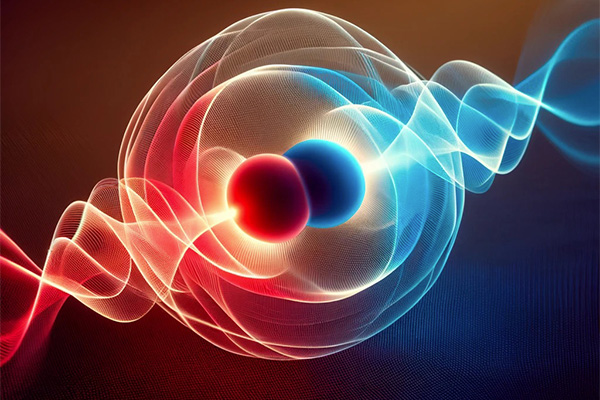Quantum physics may help lasers see through fog, aid in communications
JT Shen to pioneer two-color quantum photonic laser with DARPA grant

Communications and other laser-based technologies can be hampered by adverse conditions, such as fog, extreme temperatures or long distances. An engineer in the McKelvey School of Engineering at Washington University in St. Louis is implementing quantum technology to develop ways that lasers can operate effectively in these challenging environments.
Jung-Tsung Shen, associate professor in the Preston M. Green Department of Electrical & Systems Engineering, is developing a prototype of a quantum photonic-dimer laser with a two-year, $1 million grant from the Defense Advanced Research Projects Agency (DARPA) of the U.S. Department of Defense. With the funding, Shen will implement his lab’s two-color photonic dimer laser technology, in which carefully controlled pairs of light particles, or photonic dimers, are used to generate a powerful and concentrated beam of light, or laser. Quantum photonic-dimer lasers take advantage of quantum effects to bind two photons together, increasing their energy and efficiency.
Photons, or particles that represent a quantum of light, travel very quickly and don't carry a charge, so it is difficult to get them to interact with each other and to manipulate them. Shen’s lab found that when he “glued” two photons of different colors together to form a photonic dimer using the power of quantum mechanics, they took on the behavior of a blue photon. The entanglement between the two photons within the dimer may offer unprecedented capabilities applications in communication and imaging, Shen said.
“Photons encode information when they travel, but the travel through the atmosphere is very damaging to them,” Shen said. “When two photons are bound together, they still suffer the effects of the atmosphere, but they can protect each other so that some phase information can still be preserved.”
These two-color dimers can be tailored to the atmosphere or to the fog through a unique property of quantum mechanics known as quantum entanglement, Shen said.
“Quantum entanglement is a correlation between photons,” he said. “We are trying to exploit the property of entanglement to do something innovative. The entanglement can do many things that we can only dream of — this is just the tip of the iceberg.”
Shen previously received funding from the Chan Zuckerberg Initiative to develop the technology for deep brain imaging. Researchers can implant fluorescent molecules in the brain and use photons to excite them, which allows the photons to collect information about the brain’s structure.
Now, Shen is exploring more of that vast iceberg to move toward the realization of applications in telecommunications, quantum computing and more.
Shen’s team, which includes graduate student Qihang Liu and collaborators from Texas A&M University’s Institute for Quantum Science & Engineering, will introduce the quantum photonic-dimer laser methods that will allow them to create different states of two-color dimers at a rate of 1 million pairs per second – a rate that has never been seen before.
“The unique thing about this project is its dual focus on generating these novel strongly correlated quantum photonic states and developing the theoretical framework and advanced algorithms for their efficient detection, potentially revolutionizing quantum imaging and communication,” Shen said.
Shawn Ballard contributed to this story.




